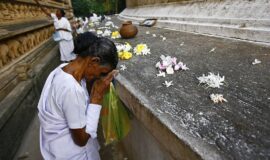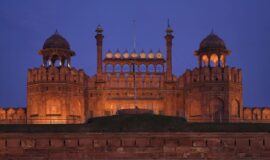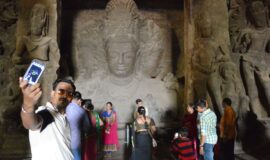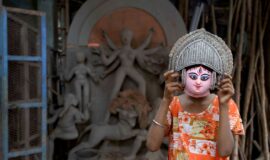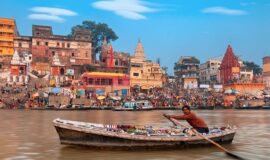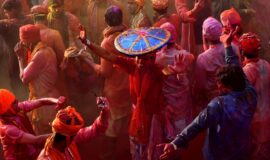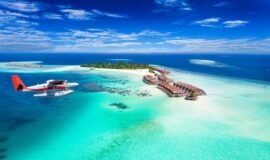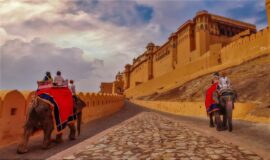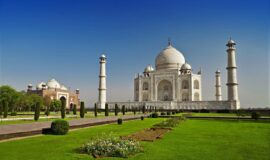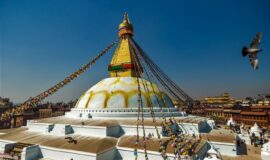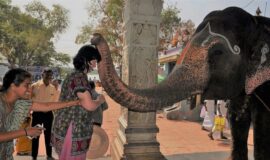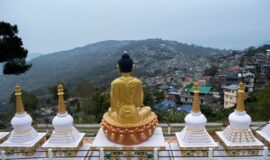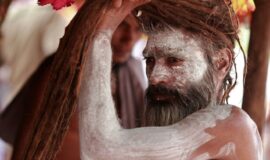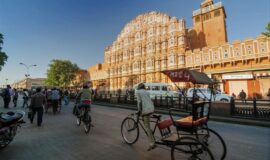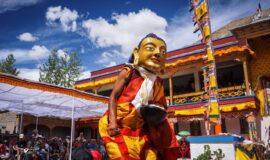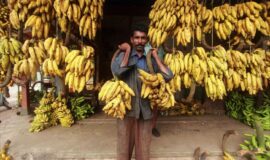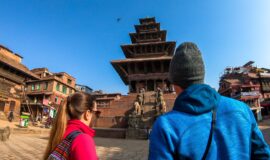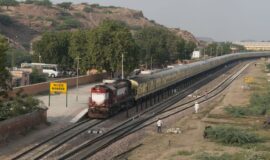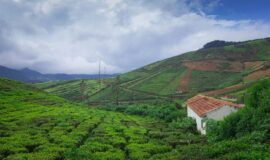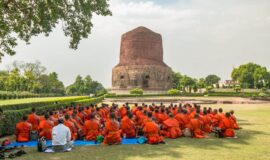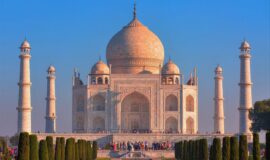Mandu: The Land and its History
Introduction
How to get there
Exploring Mandu
Introduction
Mandu citadel lies in Madhya Pradesh State, not far from the capital Indore. Leaving the noisy crowds of the city behind, the rugged serenity and solitude that awaits the visitor in the deserted citadel have a strangely calming effect. But it was not always the state of affairs; in earlier times Mandy was favored both for its charm and its location.
‘The climate is mild and bracing and after the rains, the verdure presents a spectacle the grandeur of which it is difficult to depict.’
Many lakes and dams with clean, transparent water dot the mesa landscape. The foliage is rich with khirnis, tamarinds, banyans, and mangoes, especially near the water. Huge baobabs or Adansonia digitata stretch their swollen leafless branches into the air, huge fruits hanging like pendants from these limbs.
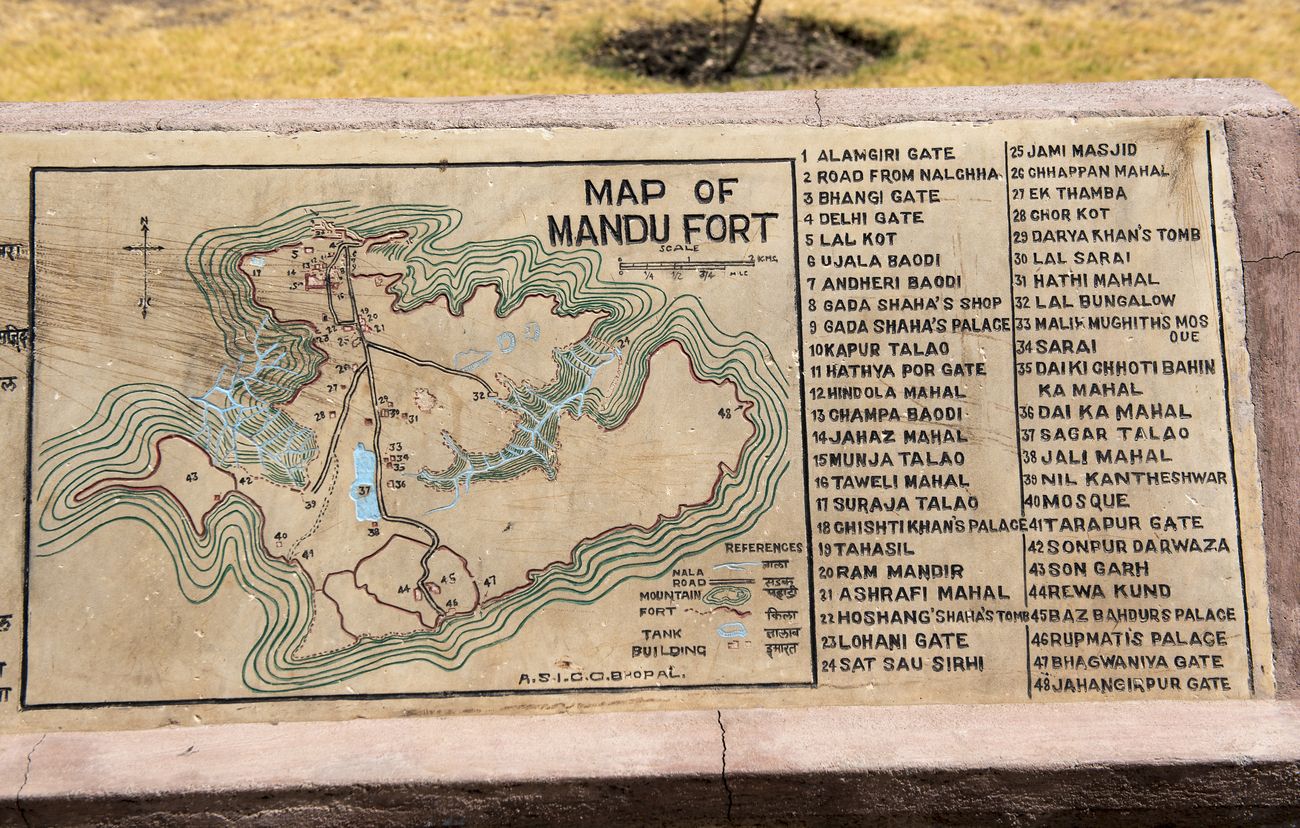
This map of Mandu Fort is sculpted on a stone at Madhya Pradesh © Bodom / Shutterstock
Mandu perches on a rocky outcrop in the Vindhya Range, 2080 feet in altitude. On all sides except to the south, the hill is separated from the Malwa Plateau by a deep ravine, called Kakra Khoh. On the southern flank, an incline of 1000 feet ends in the Narmada River as the ravine converges with the great Nimar plains and the river meanders onwards to the ocean.The citadel’s strategic position made it sought after and many rulers coveted this solitary hilltop fortress. It made the ideal frontier from where incursions could be made into Deccan and for suppressing invasions from southern enemies. However, it was the enchanting beauty that thrilled many a king’s hearts. In his book on the history of India John Keay says that Mandu is amongst the most romantic of all wild, remote sites in the entire world.
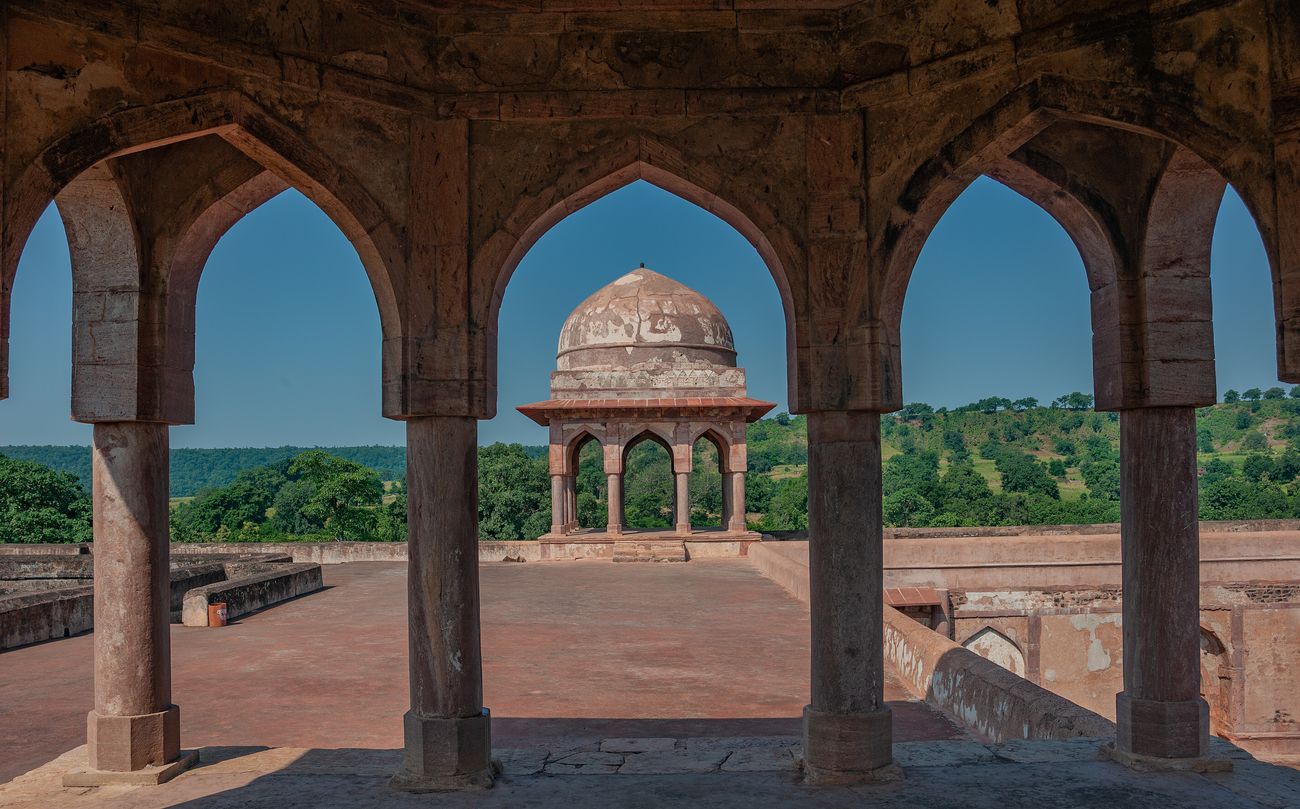
From Roopmati’s pavilion, there is a sweeping view of the plateau. An example of the elegant pointed arches used in Mandu © Chetan Soni / Shutterstock
According to the Indian Archeological Survey, Mandu’s earliest fortifications date back to the beginning of the sixth century. In nearby Talanpur, in the district of Dhar, an idol of Adinath, the Jain Tirthankara was discovered. An inscription with the date 555 AD says that it was housed in a Mandapa Durga temple. Another historian, the Persian Firishta who lived from 1560 to 1620, has the date for the first fort as between the sixth and seventh centuries. He names Anand Deo Rajput, ruler of the Beis as the one who started construction. Today, unfortunately, little of this early building remains.The following three centuries of Mandu’s history are obscure but by the tenth century, the fort might have formed part of the Gurjara-Pratihara dynasty which ruled Kannauj. Mandapika is mentioned in an inscription from the tenth century discovered in Pratagarh, Rajasthan; historians link this to Mandu.
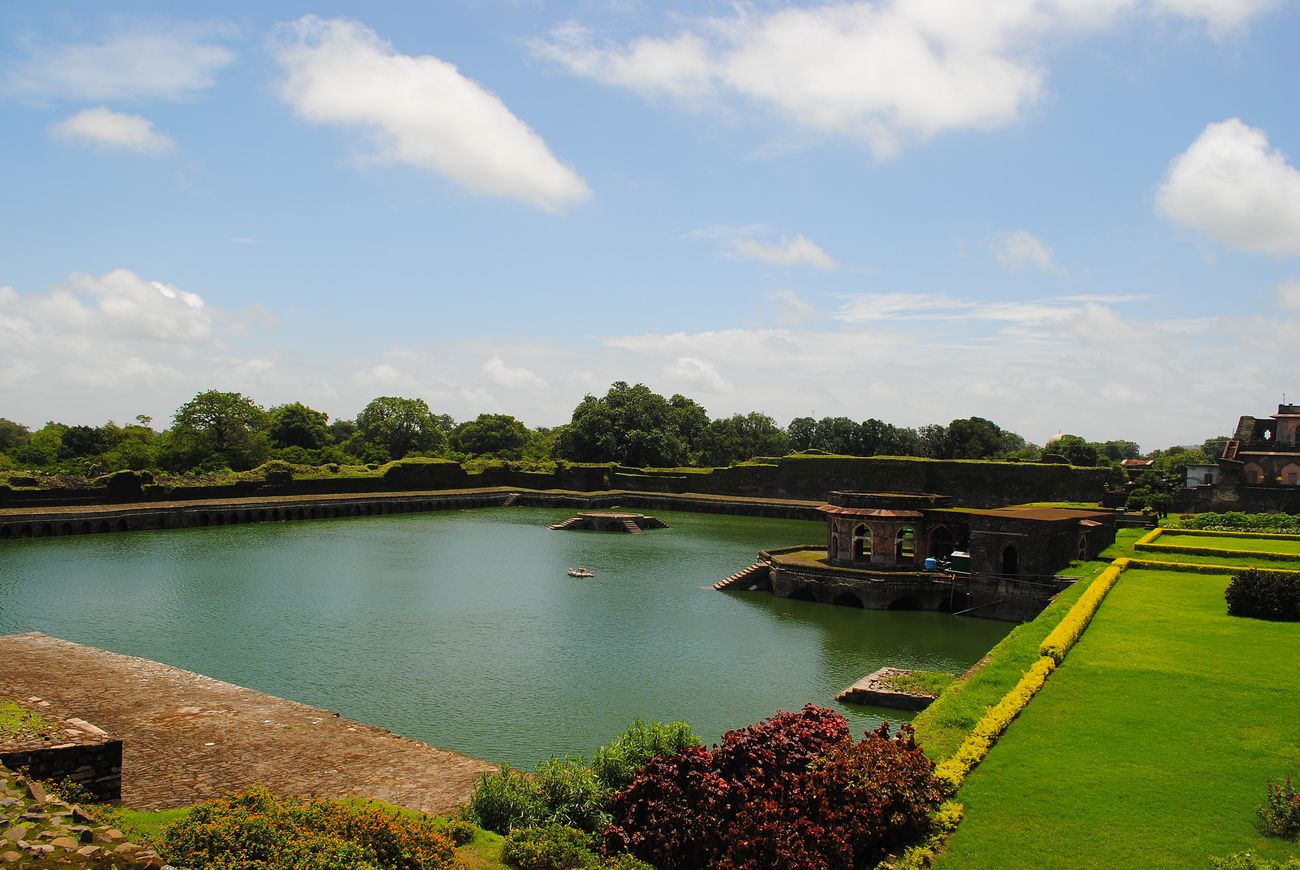
Rewa Kund provided water for Mandu in ancient times © Ravi Mathur / Shutterstock
Far West on the plateau of Mandu, on a remote hillock lies the remnant of Budhi Mando, or old Mandu, an earlier structure. It dates back to the tenth century and includes an eastern, as well as a western gate, now completely inaccessible because of dense forest and rocky terrain. Inside the once unsurmountable high walls, there is now a large lake. The ruins of numerous temples dot its banks and several sculptures, including images of the goddess Durga and a gigantic image of Ganesha, have been found.The Paramaras, the next important authority in Malwa, reached the height of their power under the rule of Raja Bhoja (1010 to 1053). Initially, Dhar was their capital but later Mandu became the seat of power. Bhangi Gate and Rampol Gate not far from the Munj Talao date back to this era.
During the thirteen century, Malwa was repeatedly invaded by the sultans from Delhi which weakened the Paramaras significantly, although Mandu mainly escaped unharmed. But in 1305 Mahlak Deo, ruler of Paramara was killed by Ain-ul-Mulk, Sultan Alauddin Khalji’s general. As a final blow, Mandu was attacked and fell victim to the Sultanate of Delhi.
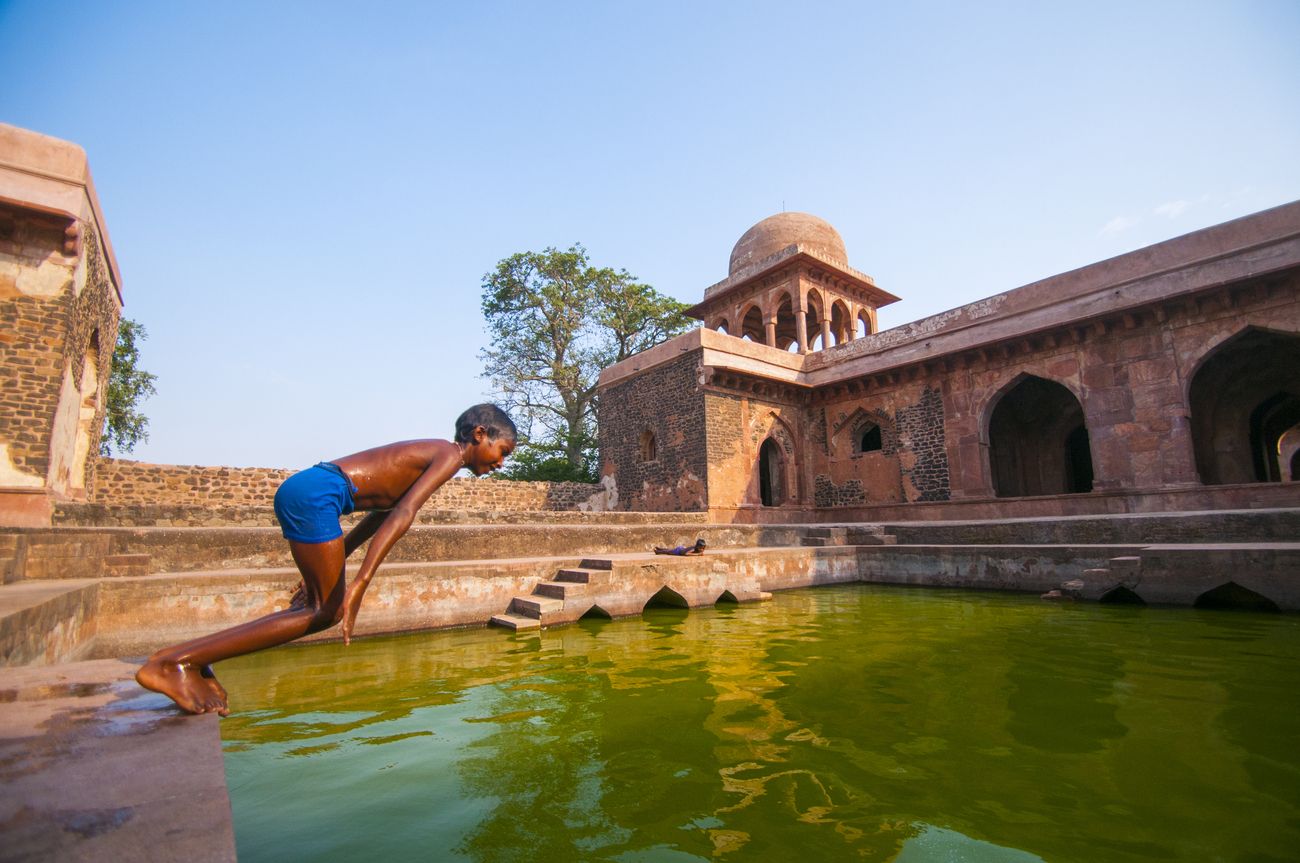
At Baz Bahadur Palace, this young lad takes a swim. Major tourist attraction in Mandu, the destination for tourist, INDIA © CRS / Shutterstock
There followed a period of political instability while Mohammad bin Tughlaq was in power. So much so that Dilawar Khan Ghuri, who ruled Mandu, declared its independence. Yazdani says that he was responsible for the renaming of Mandu to Shadiabad, which means the City of Joy, due to its wonderful surroundings.Dilawar Khan Ghuri’s offspring, Alp Khan came to power in 1405 and assumed the title, Hoshang Shah. Again Mandu was declared the capital and many splendid monuments were erected. The citadel’s defenses were strengthened to such an extent that the fort became impenetrable and in Firishta’s words, amongst the world’s most extraordinary. The combination of the deep ravine on three sides and the strong fortifications meant that the fort could not be invaded by regular means. He continues, “Any army besieging Mandu must confine its operations blockading the roads, for it is scarcely possible to invest a place of such extend (nineteen kos (34.2 Km) in circumference).”
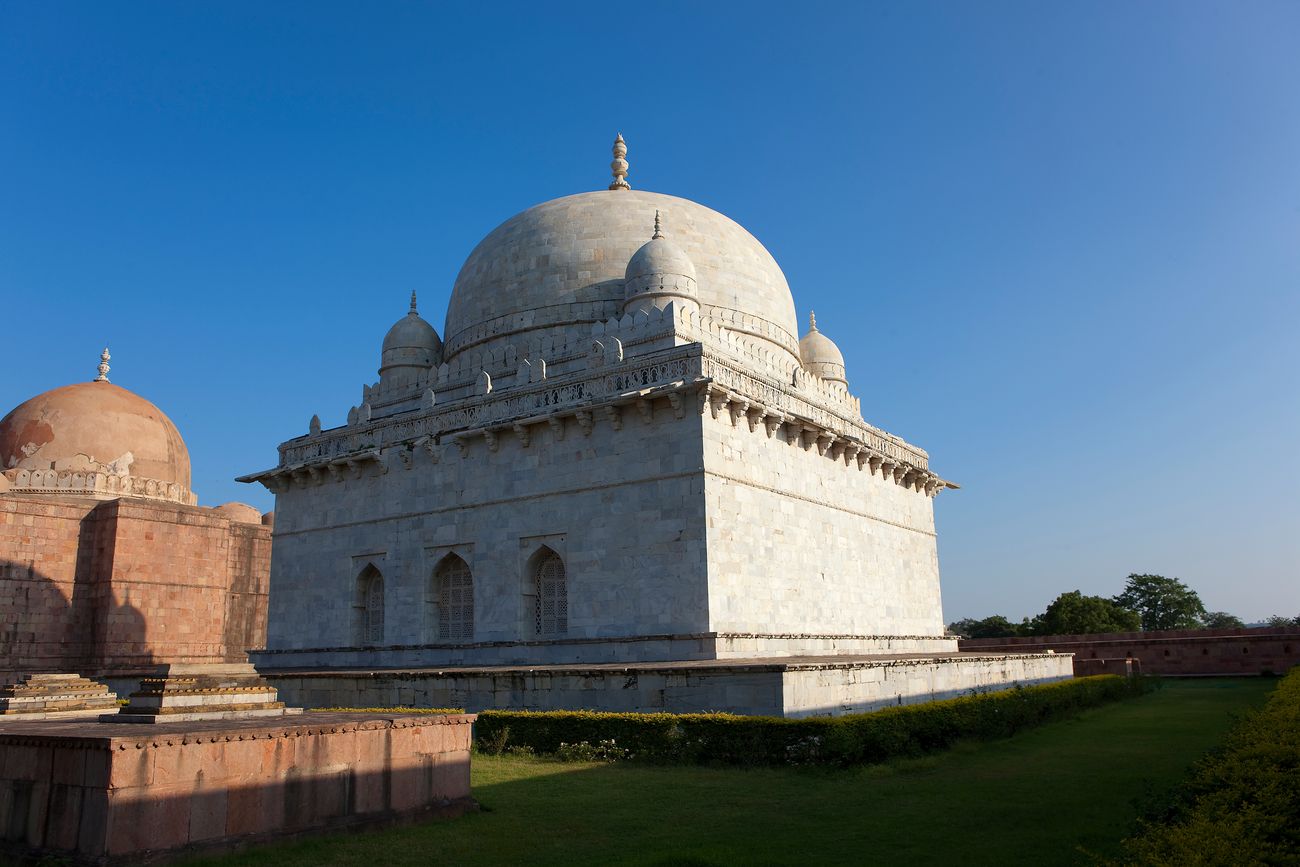
Remnants of Mandu © Iurii Kazakov / Shutterstock
Under Hoshang’s efficient reign the realm spread south up to Kherla and as far north as Kalpi. He even managed to found Hoshangabad, a city named after himself on the south banks of River Narmada.
Hoshang died in 1435 and Mandu fell back under Khalji rule with Mahmud Shah in power. He was an excellent military strategist and the kingdom flourished and became prosperous. Ghiyathuddin, his successor ruled more peacefully. He was known for his love of women and it is rumored that his seraglio consisted of 15000 women. Upon his death, the kingdom was plagued by domestic feuds until Humayan, a Mughal emperor conquered the citadel in 1534. He was later replaced by the Malik Bayazid, son of the governor of Sher Shah, who in 1554 gave himself the title of Sultan Baz Bahadur.
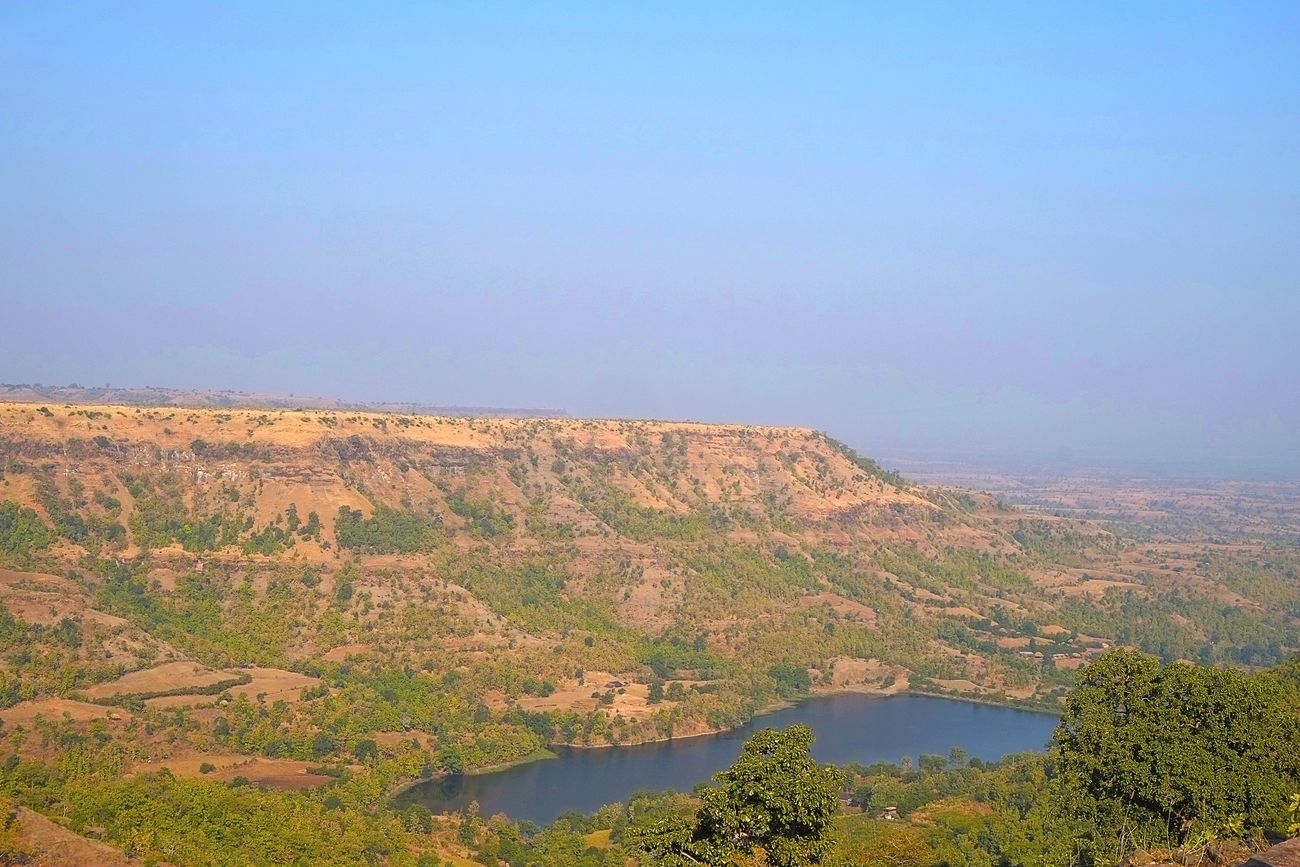
Uneven scenes of nature in a uniformed way, Mandu © RealityImages / Shutterstock
Initially, Baz Bahadur showed great resourcefulness but was utterly humiliated by Rani Durgawati, Gond queen’s victory in battle. He forswore war and spent the rest of his days pursuing music and spending time with Roopmati, his beloved. This love affair is heralded in many a folk ballad and has lived on in the imagination of the populace of Mandu. As sincere as his intentions might have been, that is not the manner in which a ruler governs or a kingdom is sustained and it was overpowered by Agham Khan, a general in the army of Akbar, emperor of the Mughal.
Mandu’s key location between Delhi and the Deccan, on a major route, made it a coveted citadel. Its wonderful climate and charm prompted many visits from Akbar and Jahangir especially, those who enjoyed its fresh cool air, a relief from the heat of the planes. In his memoirs, Jahangir mentions the fort with great fondness. He once stayed for almost seven months and ordered many older buildings to restore and constructed a few new ones, according to Yazdani.
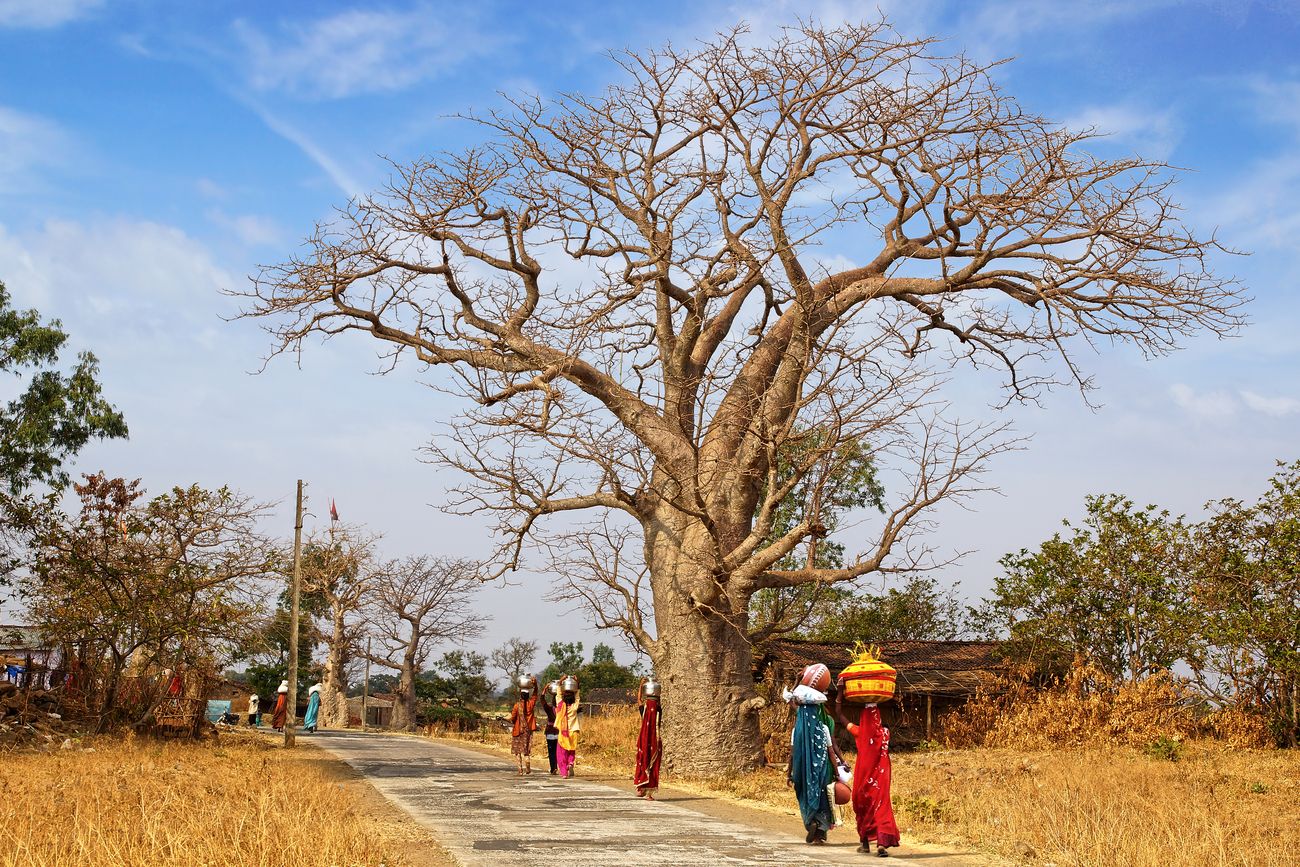
Scenic natural landscape in Mandu in the Indian state of Madhya Pradesh © Igor Plotnikov / Shutterstock
Another Mughal royal, prince Khurram, sought asylum in Mandu in 1625, when he rebelled against his own father. He would later sit on the throne and went by the name Shah Jahan. (He was responsible for the Taj Mahal.) The history of Mandu now becomes vague, until it was conquered by Dhar’s rulers, the Maratha in 1732. Today this former coveted citadel lies deserted and forlorn. It falls under the auspices of the Indian Archaeological Survey.
Monuments and other buildings in Malwa province do not show influences from the Hindu style; it remained mostly in Islamic fashion. Timur’s devastation in Delhi uprooted many craftsmen who fled to other parts. A number of these men were employed in Malwa and therefore the style is basically arcuate. Arches are pointed with fringes in the form of spearheads. This style, together with battered walls and arches, as well as lintel doors, shows influences of the Tughlaq and Khilji constructions. However, there are unique features like high plinths or bases reached by impressive stairways, carved brackets to support the windows, immense spaces, perforated screens, as well as decorations done with encaustic tiles and colored stones.
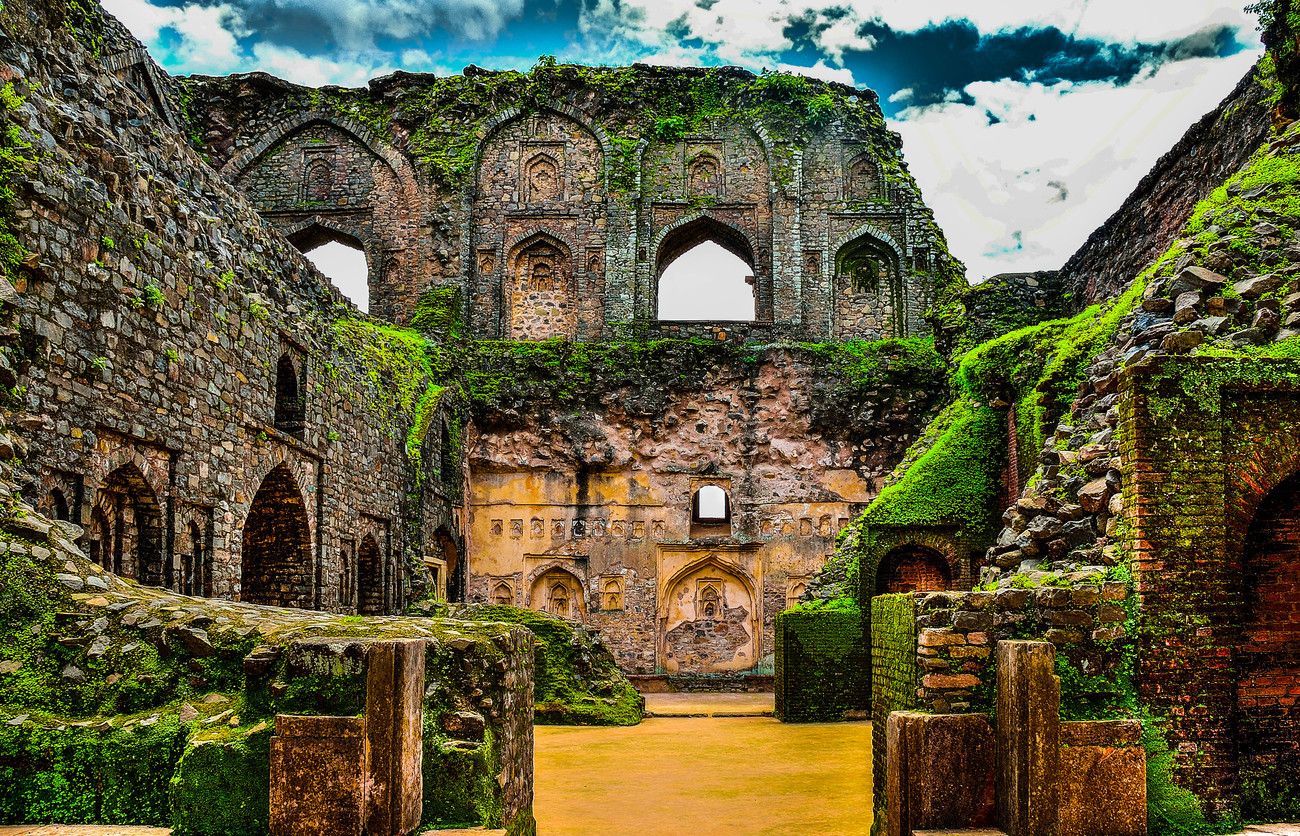
The ruins of a structure as yet unidentified, form part of the royal residence, Mandu © Penaki / Getty images
Mandu has always suffered from an inadequate supply of water, sitting high on the arid Nimar plains. Rewa Kund, a natural spring, is the sole source of water. Narmada Parikrama pilgrims always take a detour to Mandu where they pay homage at this water source. It is believed that the Kund is directly linked to the holy river Narmada.
However, in ancient times Mandu devised its own plans to ensure constant water supply to the citadel. Archeologists have come upon the remnants of a system for harvesting rainwater. It is said that a total of 1 200 water tanks existed throughout the fort, several of which served as catchment containers. Presumably, water was distributed from the main reservoir by means of tanks on the rooftops and underground channels to cisterns inside the buildings, all with the help of pulleys. Pipes helped to distribute water inside the buildings to where it was needed. This system ensured water right through the day.
Deep wells like Andheri Baoli and Ujala Baoli supplied drinking water. They also fed the royal baths or hammam with hot and cold water. Conservationists consider this efficient way of utilizing rainwater as the ideal solution for drought stricken areas.
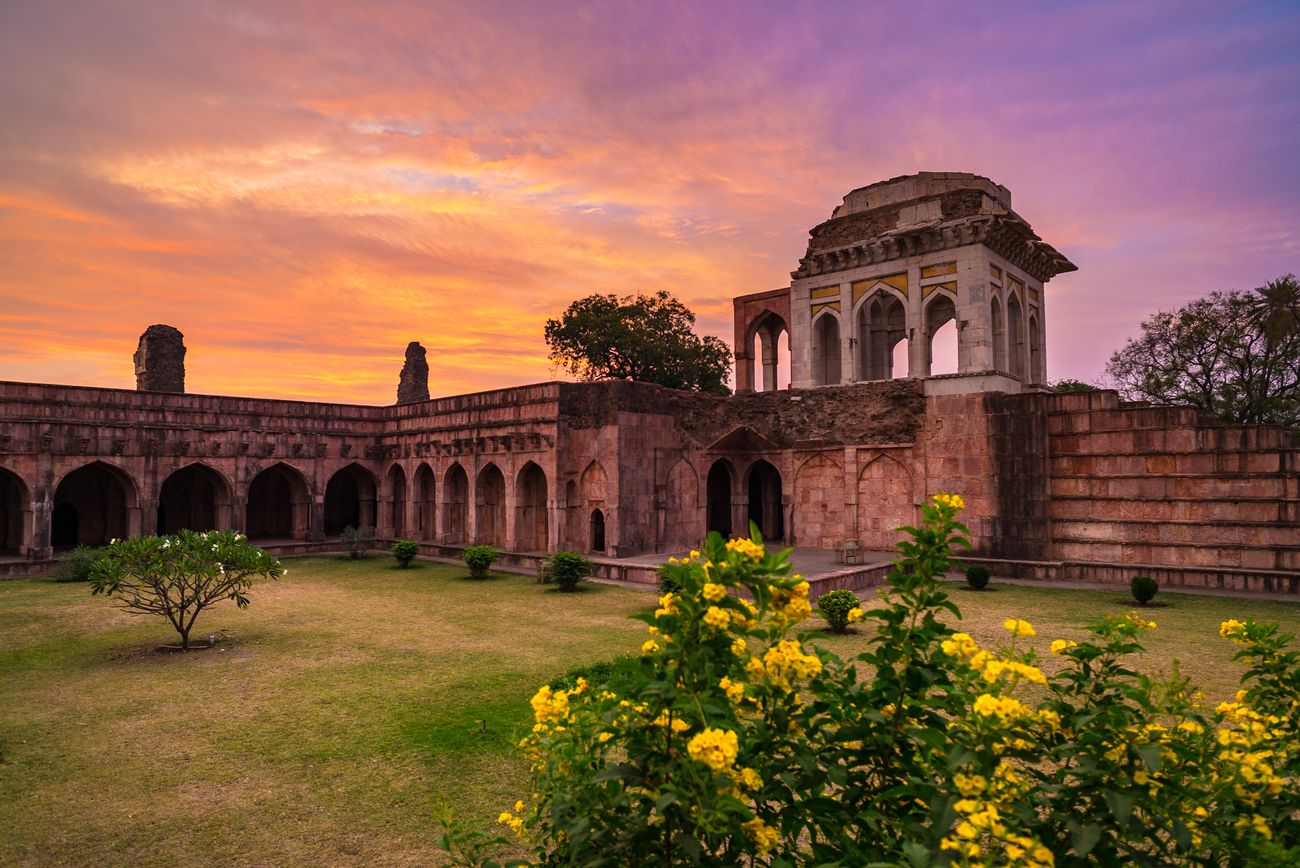
Afghan remnants of Islam empire, Muslim mausoleum, Mosque monument, pretty skies at dawn, Mandu © Fabio Lamanna / Shutterstock
How to get there
- The busy NH 3 goes from Indore, through Mhow. Turn right at Gujri and follow a 12.5-mile small road to Mandu.
- From Indore, capital of Madhya Pradesh, drive along with HH 59. Make a left in Dhar, following highway 31. Mandu lies 59 miles from Indore.
- The journey from Indore by bus takes around two hours.
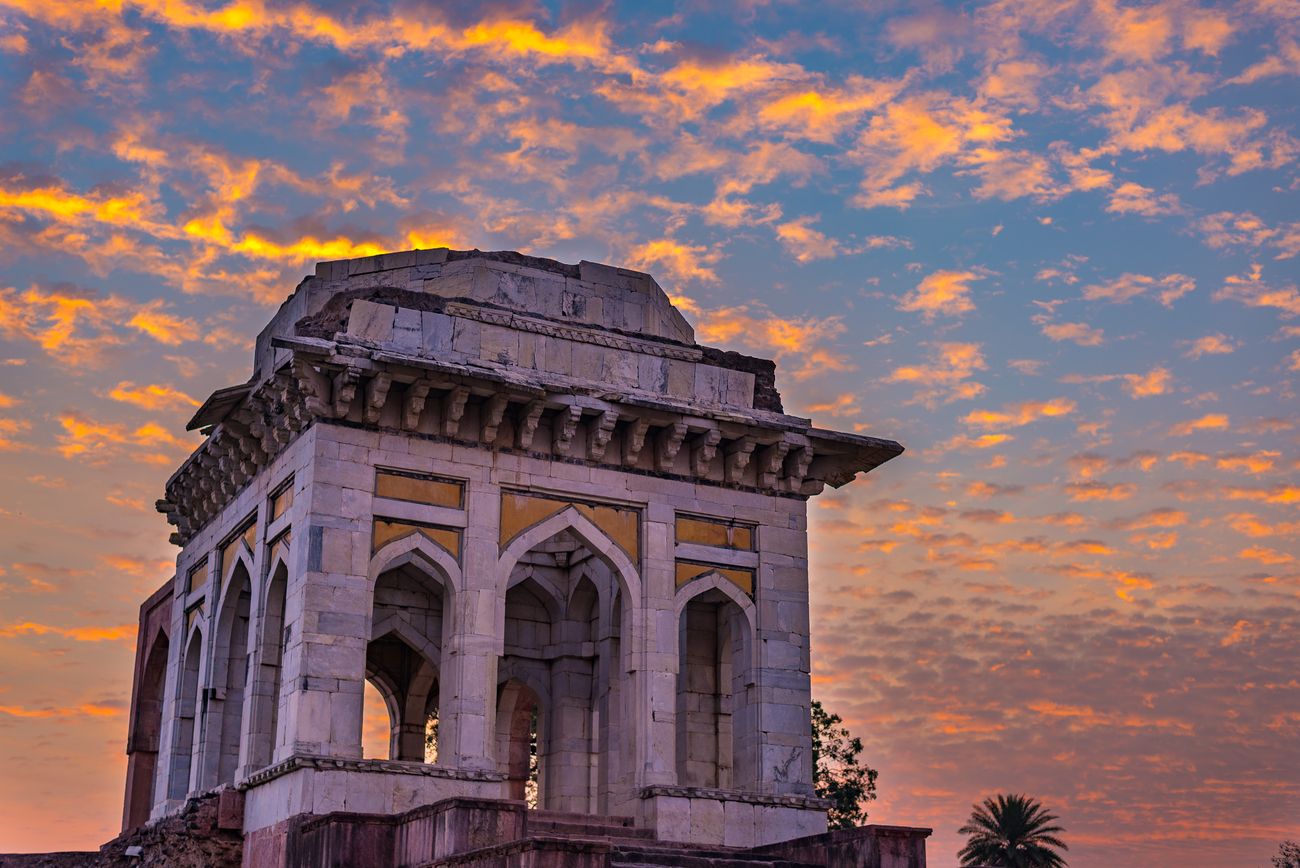
The ruins of a mosque at Sunrise in Mandu © FBXX / Getty images
Exploring Mandu
The Mandu hilltop is crowned with a 28 mile long solid barrier of rubble and boulders running along most of its perimeter. These ruined fortification walls encircle a number of monuments:
- Royal Enclave: To the northwest, a number of palatial residences make up a large complex. Amongst them is the spectacular Jahaz Mahal lying between two man-made lakes.
- Central Group: As the name suggests this group of four monuments lies in the middle of the citadel, around the tomb of Hoshang Shah.
- Sagar Talao Group: The largest lake in Mandu is found towards the southern part and on its eastern banks there are a number of monuments.
- Rewa Kund: Near this artificial lake are various structures including the palace of Baz Bahadur and the Roopmati Pavilion. It is located on the southern side of the citadel.
A narrow land strip connects Mandu to Sonargh, built as an emergency escape structure. It is not known if it the Malwa Sultans ever used it. On this almost inaccessible hill also sits the ruins of the much later Maratha fortress or Garhi.
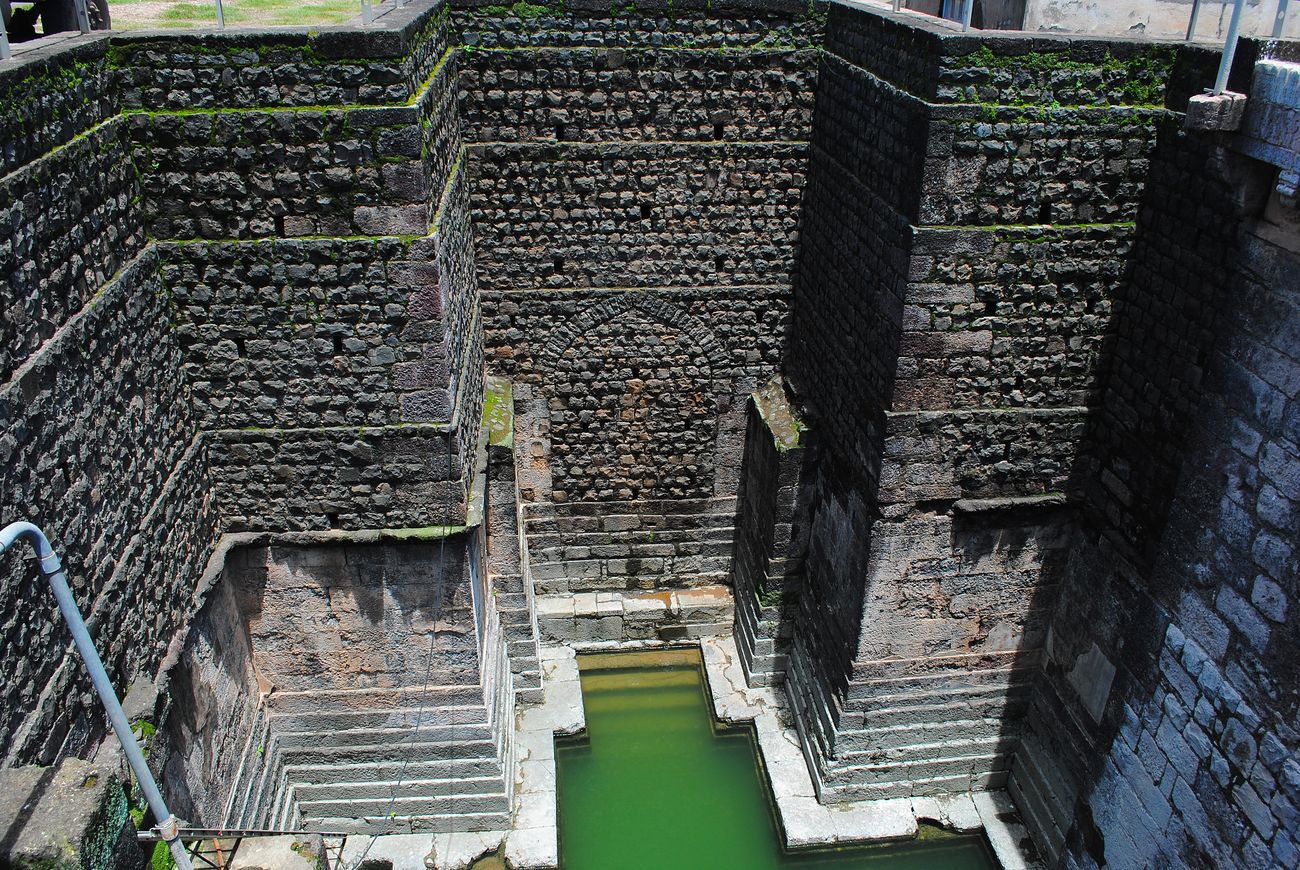
Part of the ancient water management system in Mandu © Ravi Mathur / Shutterstock
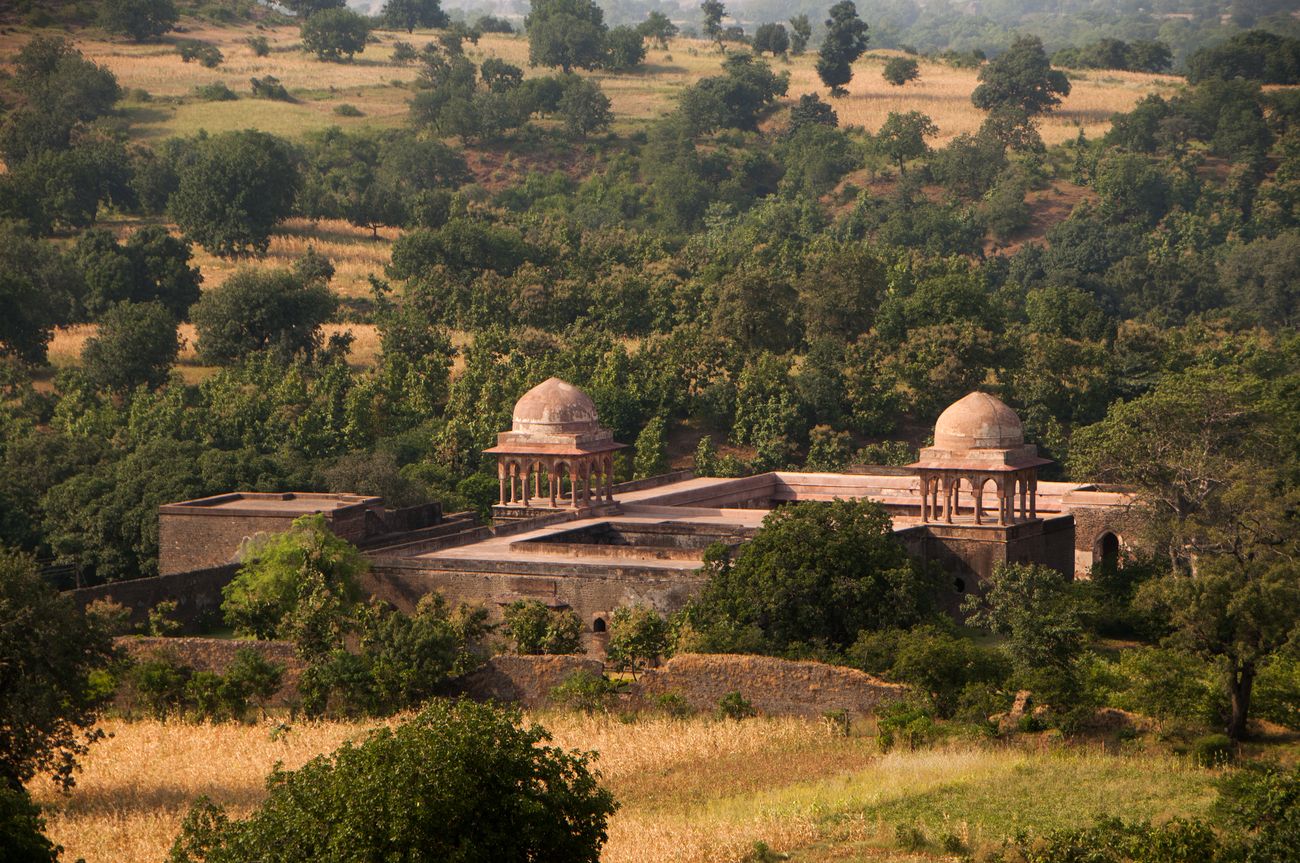
Baz Bahadur Palace, one of Mandu’s major tourist attractions and destinations, INDIA © CRS / Shutterstock
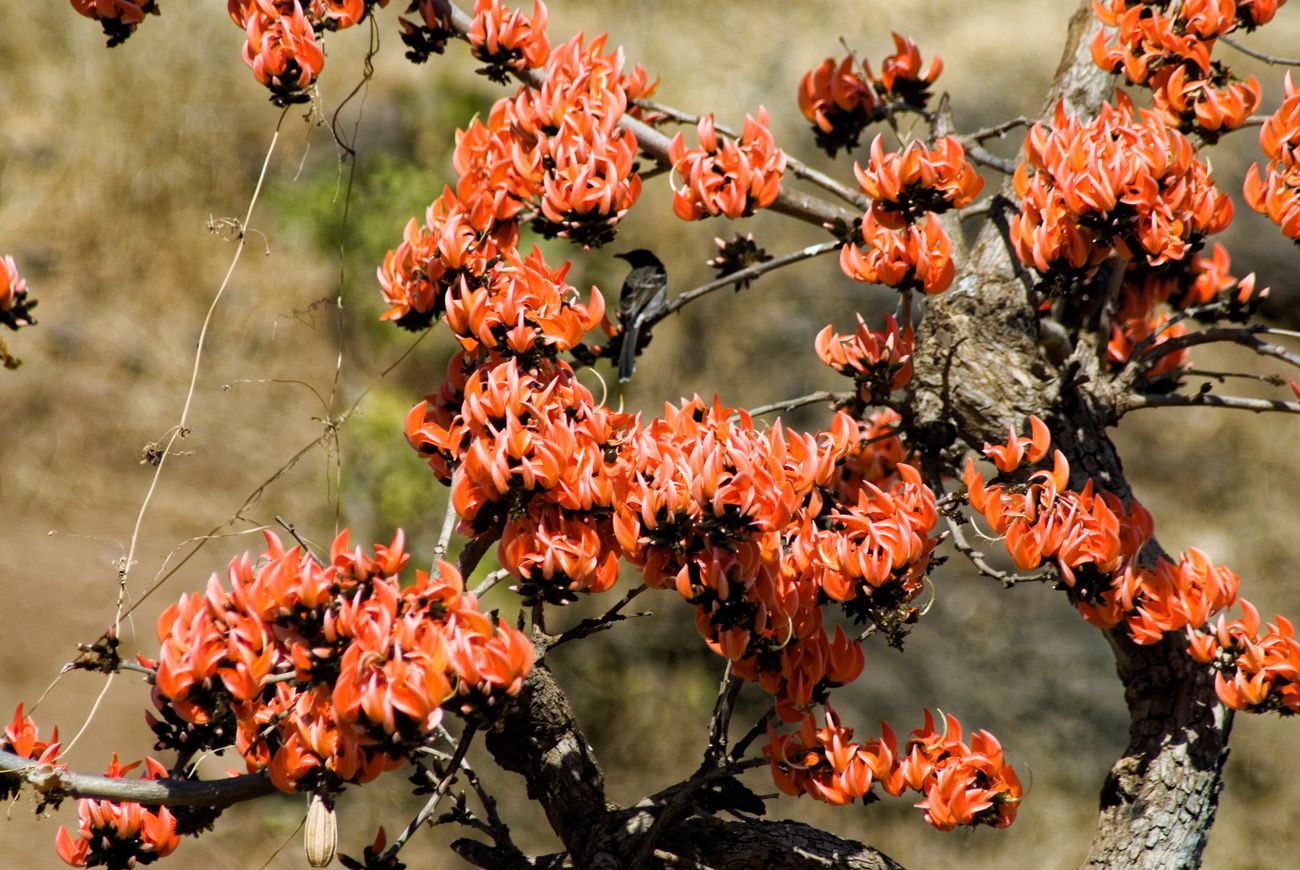
Palash Butea monosperma flowers in the World Heritage Site of Mandu © Satish Parashar / Shutterstock
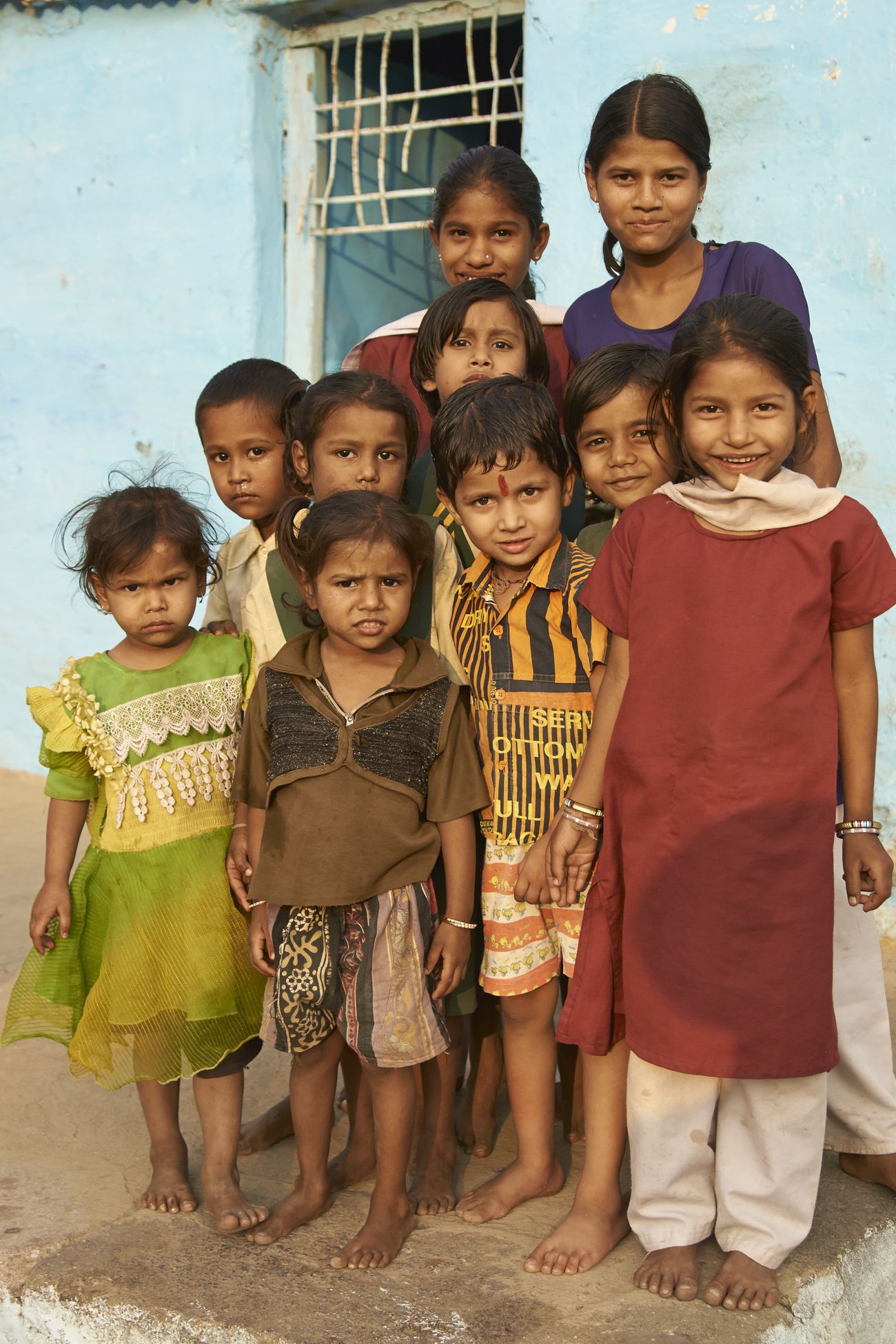
Children gather in Mandu the town on a hill © JeremyRichards / Shutterstock
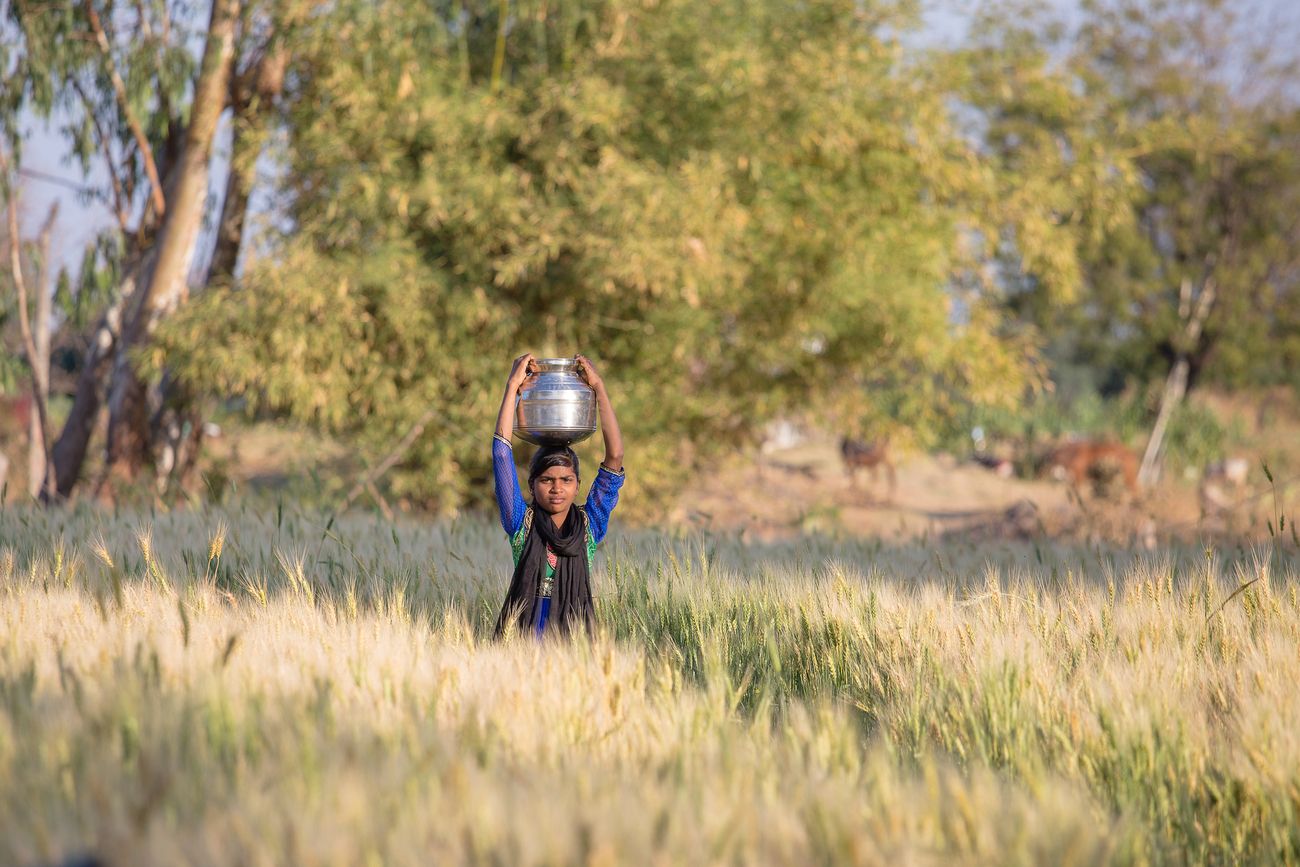
Indian girl with a water jug on her head travels the fields of wheat in an Indian village Mandu © OlegD / Shutterstock
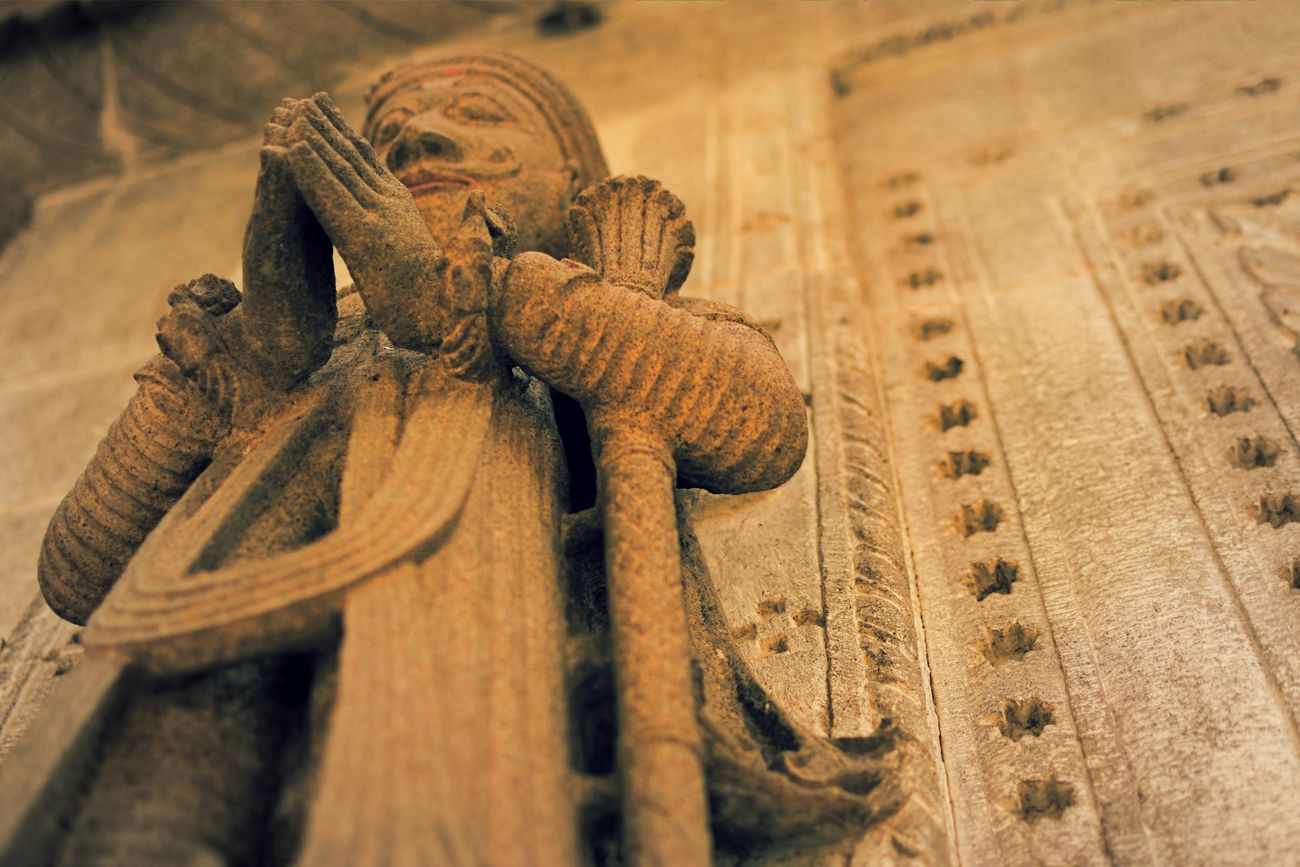
Mandu sculptures Madhya Pradesh © Mymindpalace / Shutterstock
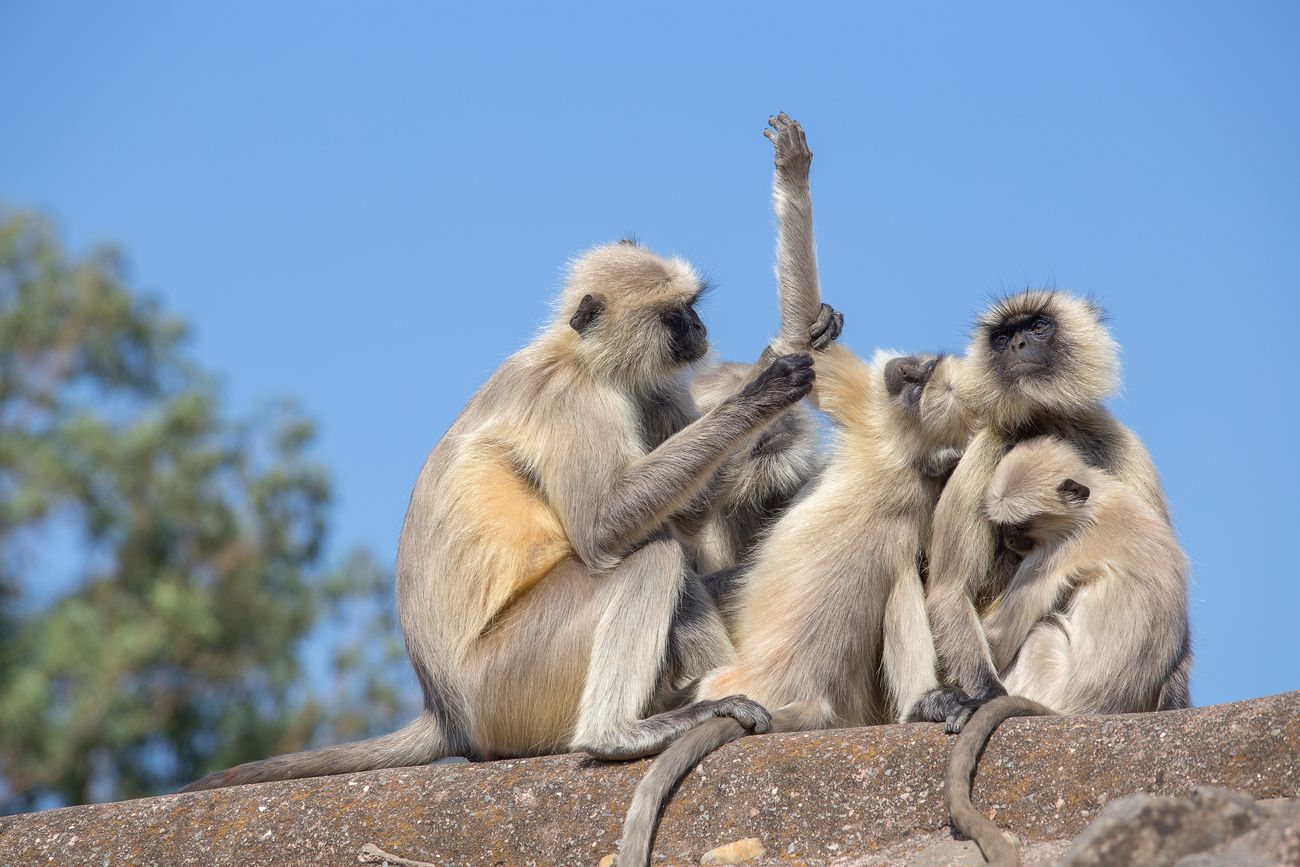
Hanuman Langur aka Gray Langur in Mandu town. Slender monkeys with long tails are known as Indian langurs © OlegD / Shutterstock
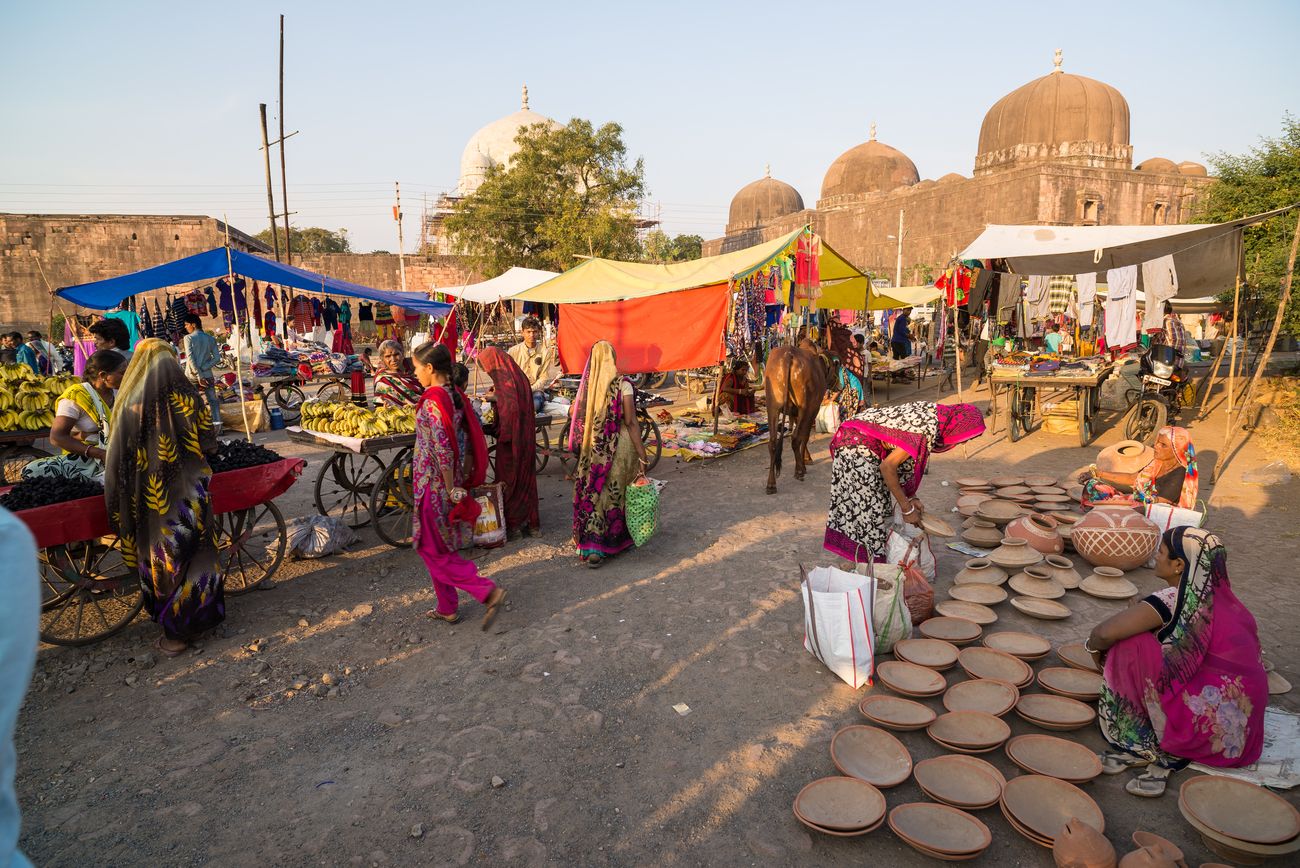
Tribal markets in Mandu are held near the old mosque and Islamic heritage © Fabio Lamanna / Shutterstock

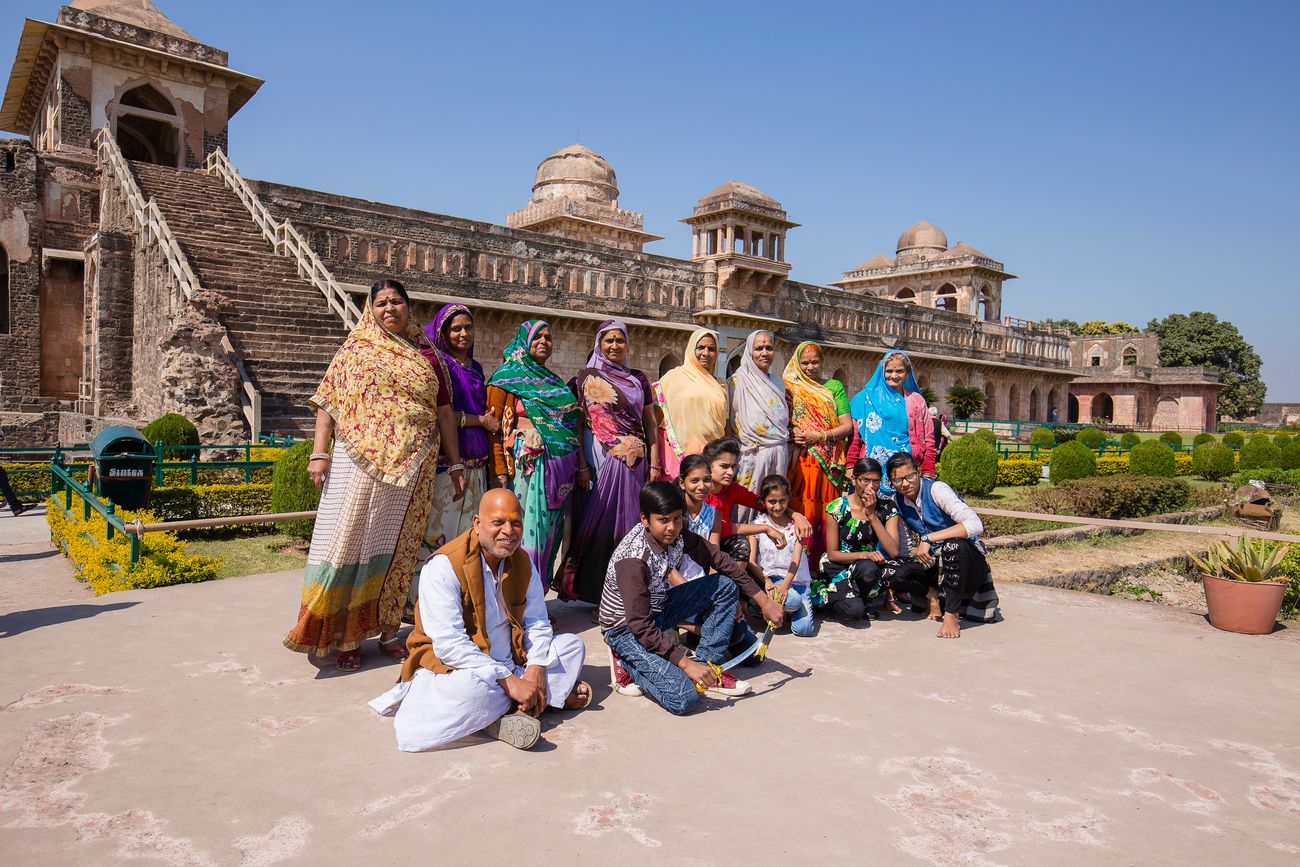
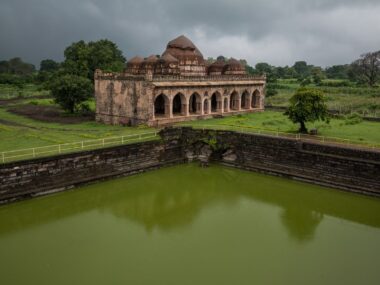
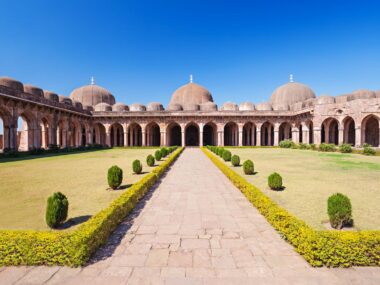
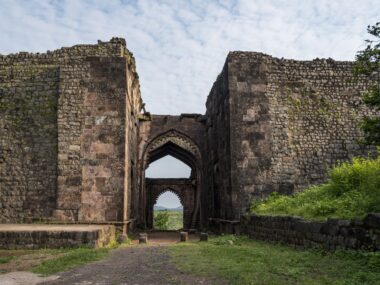
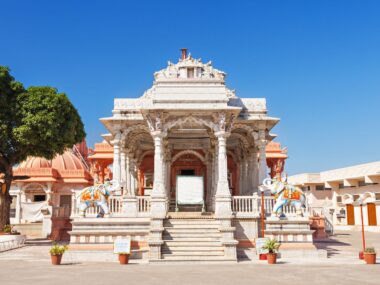
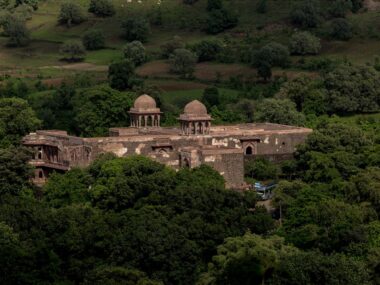
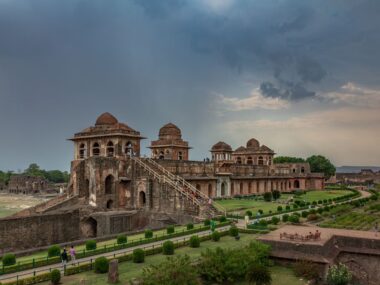
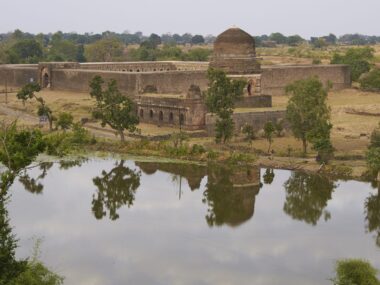

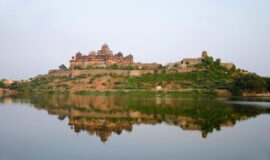
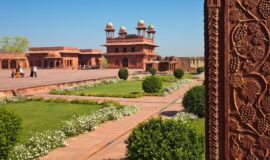


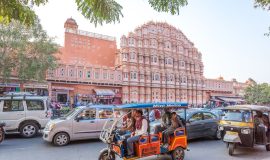



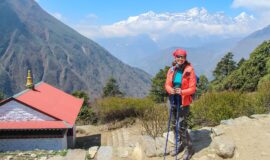

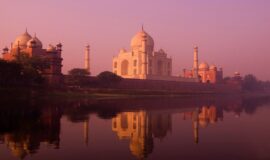
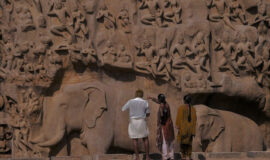
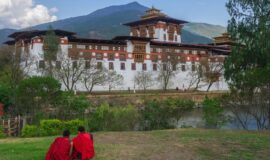

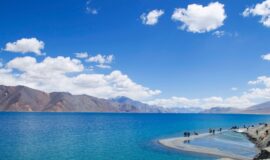


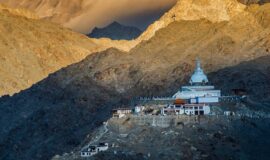
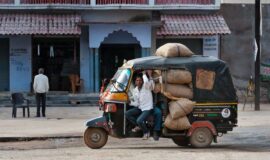

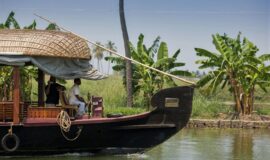
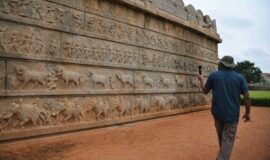

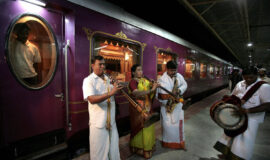
![Golden Triangle Tour with Goa [Culture + Beach Vacation] (12 days) Golden Triangle Tour with Goa [Culture + Beach Vacation] (12 days)](https://www.vacationindia.com/wp-content/uploads/2022/06/golden-triangle-tour-with-beach-vacation-270x160.jpg)
